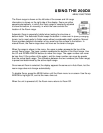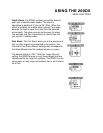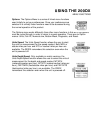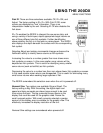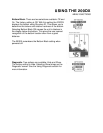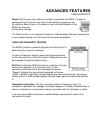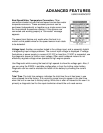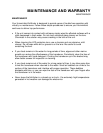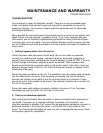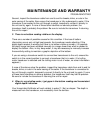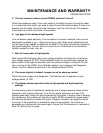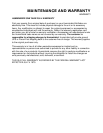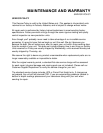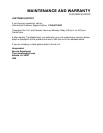MAINTENANCE AND WARRANTYMAINTENANCE AND WARRANTY
TROUBLESHOOTING
Second, inspect the transducer cable from end to end for breaks, kinks, or cuts in the
outer casing of the cable. Also ensure the transducer is fully submerged in water. If the
transducer is connected to the unit through a switch, temporarily connect it directly to
the unit and try again. If none of these items identifies an obvious problem, the
transducer itself is probably the problem. Be sure to include the transducer if returning
the unit for repair.
3. There is no bottom reading visible on the display.
There are a number of possible causes for this condition. If the loss of bottom
information occurs only at high boat speeds, the transducer needs adjusting. If the
digital depth readout is working but there is no bottom visible on-screen, it is possible
the depth range has been adjusted manually to a range lower than what is needed to
display the bottom. Also, in very deep water, it may be necessary to manually increase
the sensitivity setting to maintain a graphic depiction of the bottom.
If you are using a transducer switch to connect two transducers to the unit, ensure the
switch is in the correct position to connect a transducer that is in water. (If a trolling
motor transducer is selected and the trolling motor is out of water, no sonar information
appears.)
It none of the above solve the problem, inspect the transducer cable from end to end for
breaks, kinks, or cuts in the outer casing of the cable. If the transducer is connected to
the unit through a switch, temporarily connect it directly to the unit and try again. If none
of these items identifies an obvious problem, the transducer itself may be the problem.
Be sure to include the transducer if returning the unit for repair.
4. When in very shallow water, I get gaps in the bottom reading and inconsistent
digital depth indication.
Your Humminbird fishfinder will work reliably in water 2’ (.6m) or deeper. The depth is
measured from the transducer, not necessarily from the surface.



